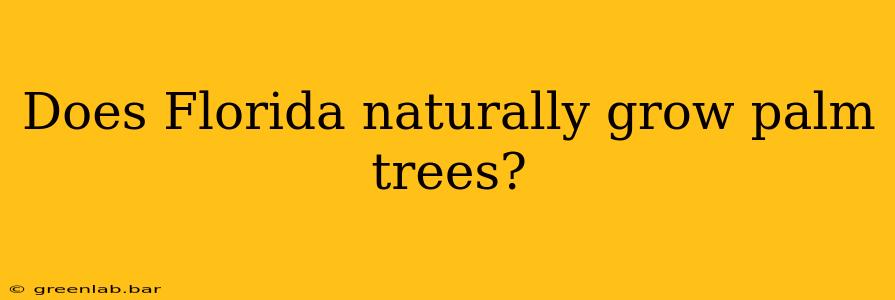Florida's landscape is synonymous with swaying palm trees, their fronds gently rustling in the breeze. But is this iconic image a natural occurrence, or the result of landscaping efforts? The answer is a nuanced one, delving into the diverse species of palms and Florida's unique ecosystem.
Florida's Native Palm Species: More Than Just a Pretty Picture
While many associate Florida with palm trees, it's crucial to understand that not all palms found in the Sunshine State are native. Florida boasts a surprisingly diverse range of native palm species, thriving naturally within its varied ecosystems. These aren't simply planted for aesthetic appeal; they're integral parts of the natural landscape.
Key Native Palm Species:
- Cabbage Palm (Sabal palmetto): This is Florida's state tree, a truly iconic species found throughout the state, from coastal areas to inland swamps. Its resilience and adaptability allow it to thrive in diverse conditions.
- Silver Palm (Cocothrinax argentata): Often found in coastal areas, particularly in South Florida, this palm showcases silvery-green leaves, adding a unique touch to the landscape.
- Paurotis Palm (Acoelorrhaphe wrightii): This palm prefers swampy, wet environments, playing a vital role in Florida's unique wetland ecosystems.
- Florida Thatch Palm (Thrinax radiata): This smaller palm species is frequently seen in coastal hammocks and rocklands, adding to the biodiversity of Florida's natural areas.
These are just a few examples; Florida's native palm population is richer and more varied than many realize. Their presence isn't a result of human intervention; they've naturally colonized and flourished within the state's diverse habitats.
Non-Native Palms in Florida: A Landscape Transformation
While several species are indigenous, many other palm varieties found in Florida are non-native. These have been introduced through landscaping and horticultural efforts, transforming the visual landscape significantly. This doesn't diminish the beauty of these palms, but it's important to distinguish them from the native varieties that have naturally established themselves over centuries.
The Impact of Non-Native Palms:
The introduction of non-native palms has both aesthetic and ecological implications. While enhancing the tropical ambiance, it's crucial to consider potential impacts on native plant communities and ecosystems. Careful management and responsible landscaping are key to minimizing any negative consequences.
Conclusion: A Natural and Cultivated Paradise
In summary, Florida does indeed naturally grow palm trees, showcasing a stunning variety of native species integral to its ecosystem. However, the landscape also features numerous non-native palms, reflecting human intervention and landscape design. Understanding this distinction provides a richer appreciation of Florida's palm-studded beauty, appreciating both the naturally occurring and the cultivated aspects of this iconic image. Further research into specific palm species and their habitats will reveal the incredible biodiversity and complexity of Florida's palm-filled environment.

